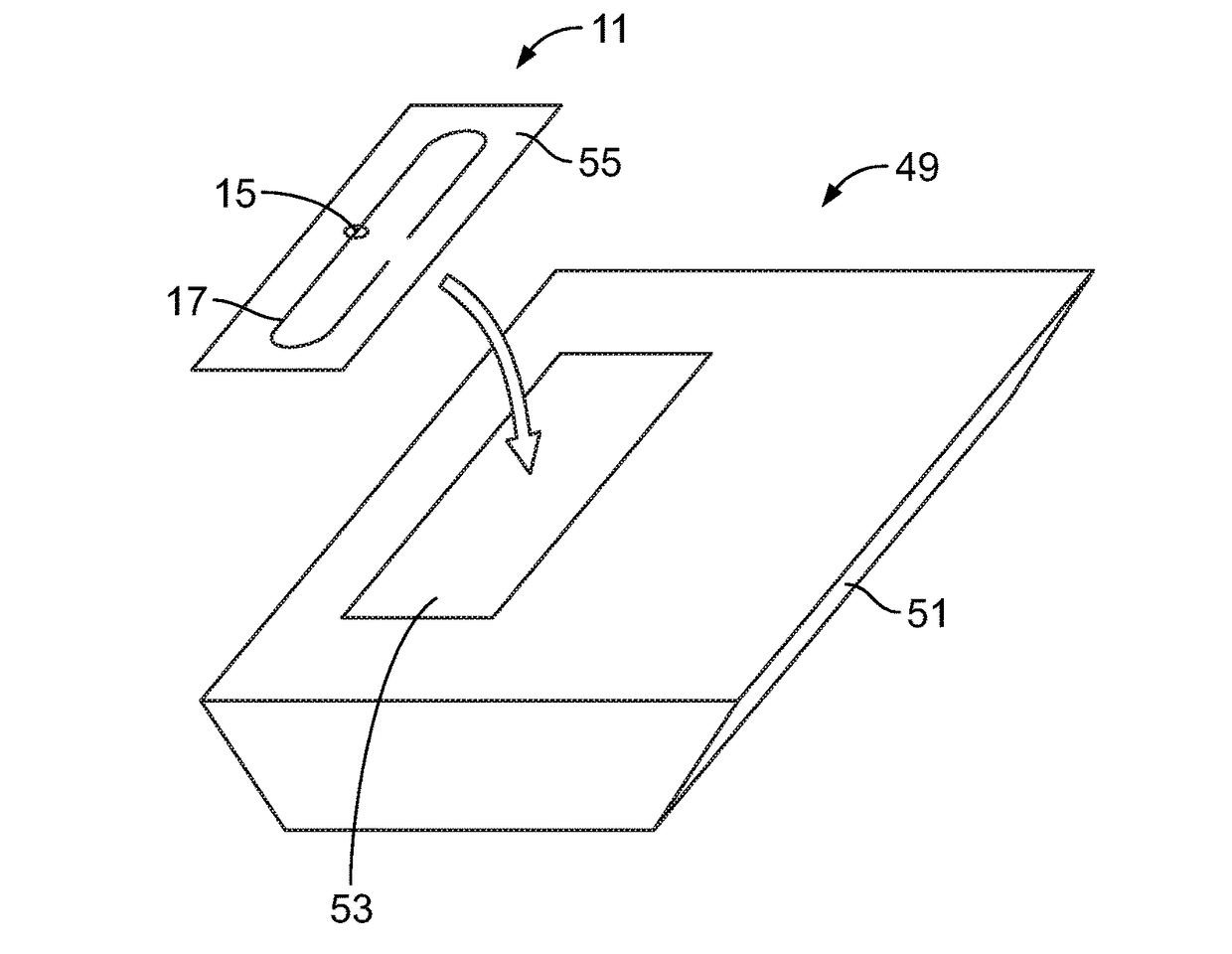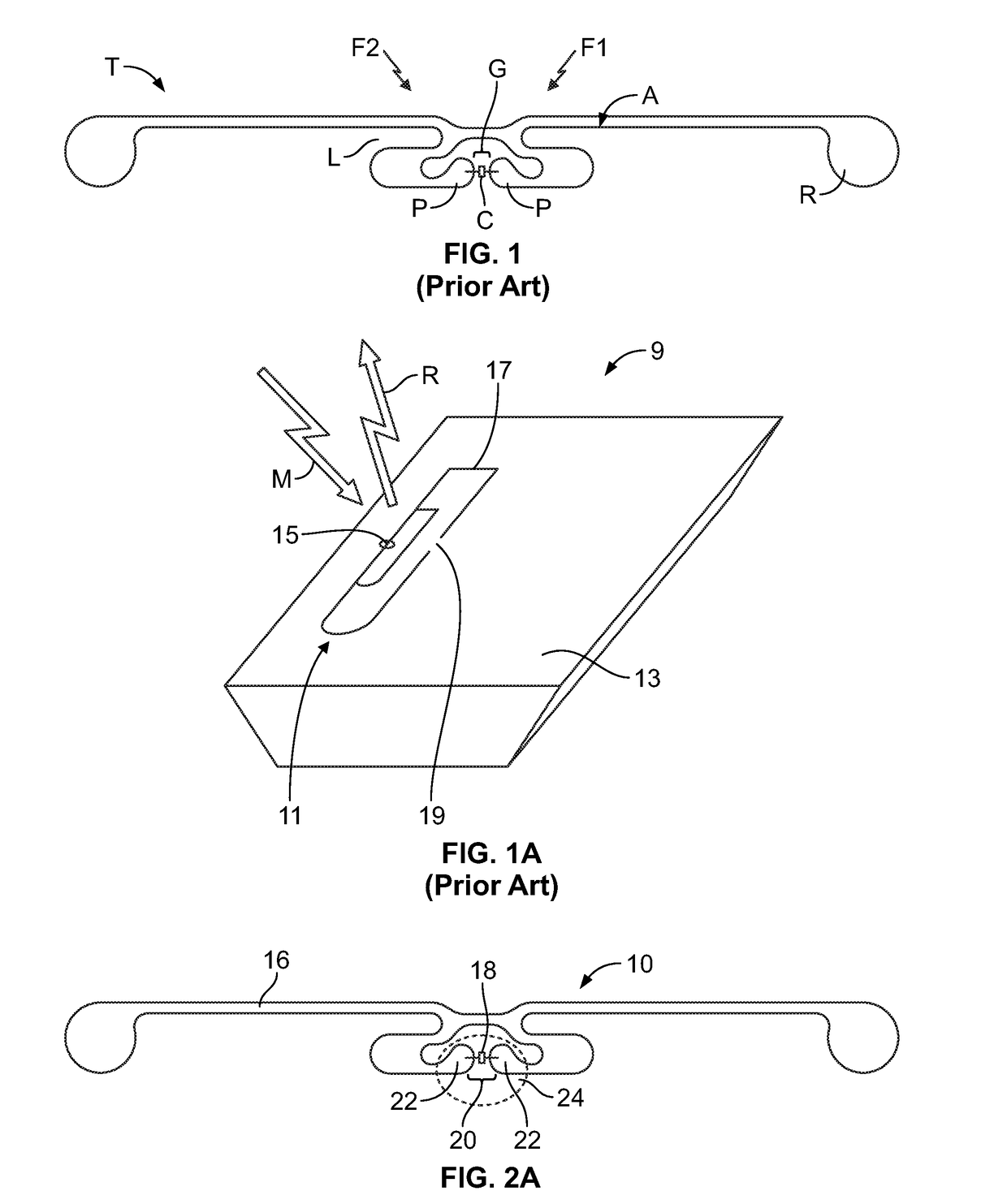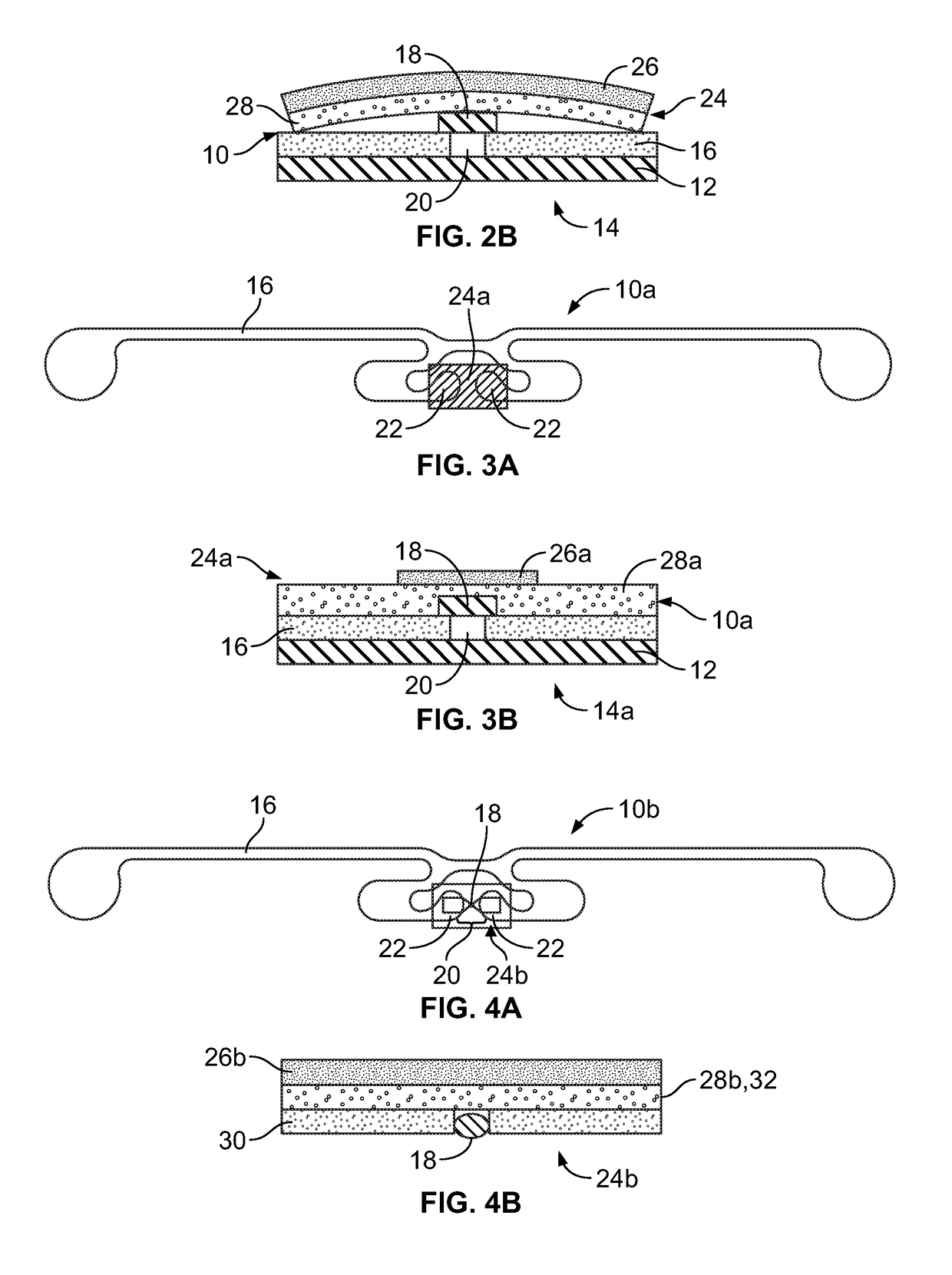RFID tags with shielding structure for incorporation into microwavable food packaging
a technology of shielding structure and rfid tags, which is applied in the direction of packaging foodstuffs, instruments, packaged goods, etc., can solve the problems of failure to take proper care, arc generation, and packaging to catch fire, and achieve greater resistance and limit the voltage across the gap
- Summary
- Abstract
- Description
- Claims
- Application Information
AI Technical Summary
Benefits of technology
Problems solved by technology
Method used
Image
Examples
Embodiment Construction
[0034]As required, detailed embodiments of the present invention are disclosed herein; however, it is to be understood that the disclosed embodiments are merely exemplary of the invention, which may be embodied in various forms. Therefore, specific details disclosed herein are not to be interpreted as limiting, but merely as a basis for the claims and as a representative basis for teaching one skilled in the art to variously employ the present invention in virtually any appropriate manner.
[0035]FIGS. 2A and 2B show an RFID tag 10 according to the present disclosure, while FIG. 2B shows the RFID tag, generally designated at 10, secured to the enclosure 12 (e.g., a paper box) of packaging, generally designated at 14, for a microwavable food item. The packaging 14 may include other items, such as a “crisping sleeve” configured to be microwaved with the food item. The RFID tag 10 may be incorporated into the packaging 14 by any suitable approach and, while the RFID tag 10 is secured to ...
PUM
 Login to View More
Login to View More Abstract
Description
Claims
Application Information
 Login to View More
Login to View More - R&D
- Intellectual Property
- Life Sciences
- Materials
- Tech Scout
- Unparalleled Data Quality
- Higher Quality Content
- 60% Fewer Hallucinations
Browse by: Latest US Patents, China's latest patents, Technical Efficacy Thesaurus, Application Domain, Technology Topic, Popular Technical Reports.
© 2025 PatSnap. All rights reserved.Legal|Privacy policy|Modern Slavery Act Transparency Statement|Sitemap|About US| Contact US: help@patsnap.com



